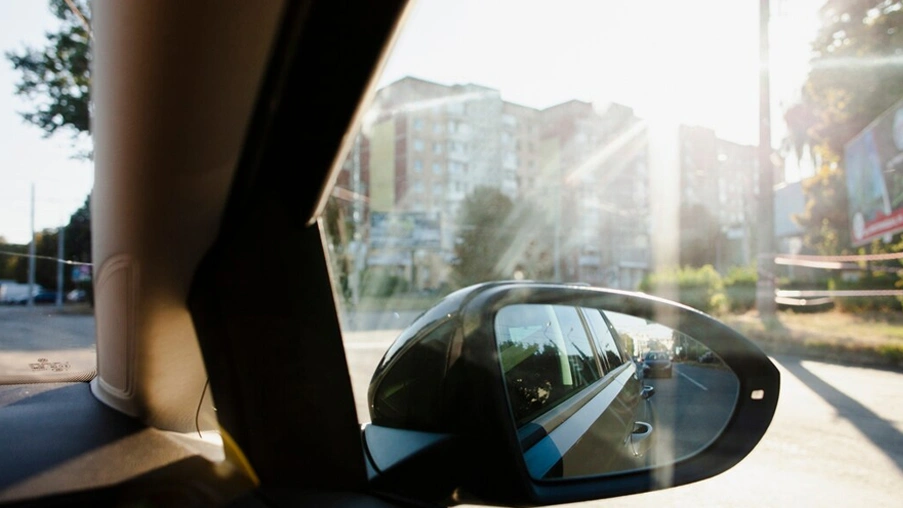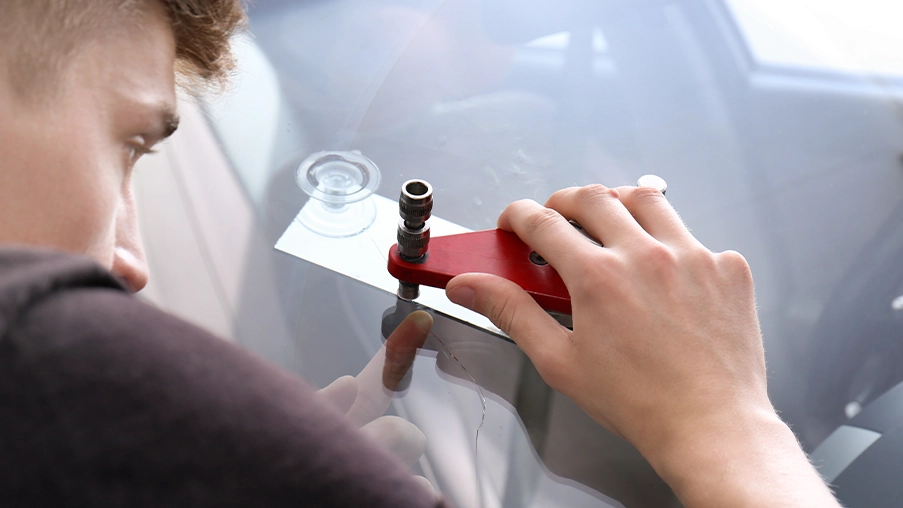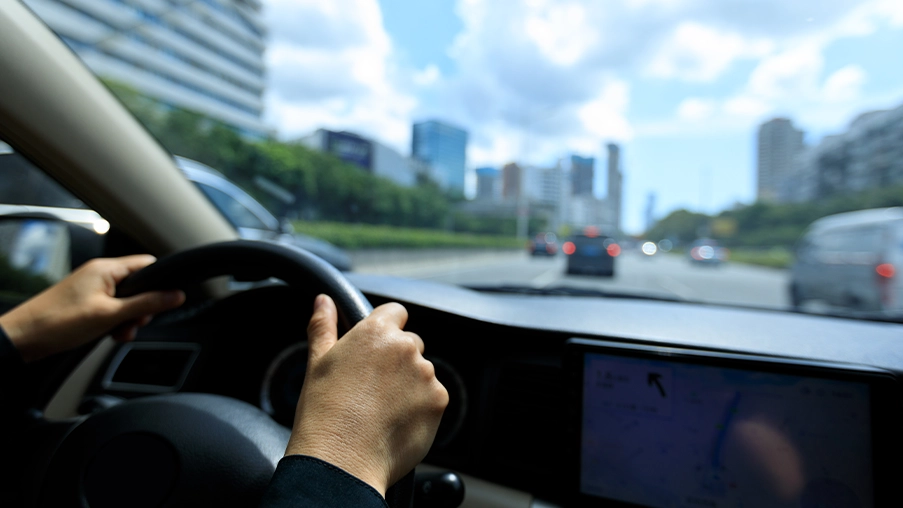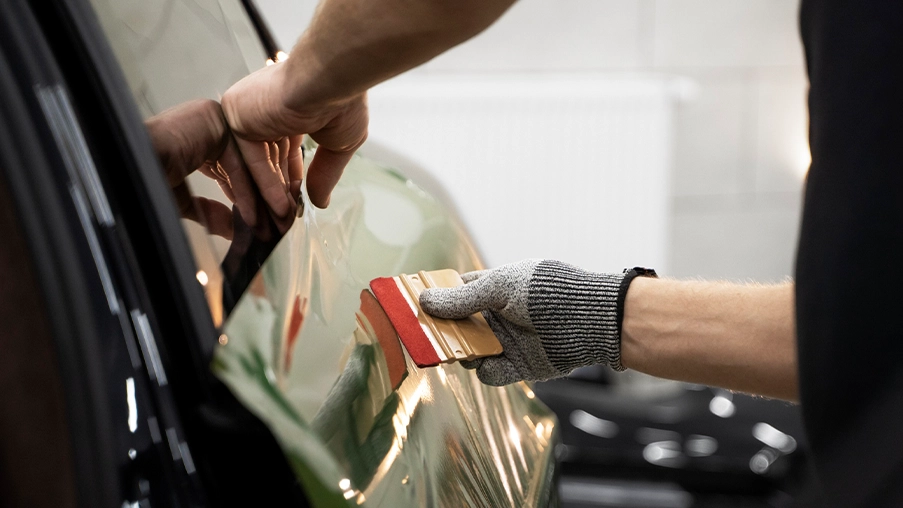How to Reduce the Impact of Sun Glare While Driving
February 17, 2025
Have you ever had trouble seeing the road due to blinding sun glare? This common hazard can momentarily impair vision, reducing reaction time and increasing the risk of accidents.
Sun glares occur when sunlight reflects off your windshield, wet road, or a nearby vehicle. It makes seeing traffic signals, road markings, or pedestrians difficult. You are most at risk at sunrise and sunset when the sun is at its lowest point on the horizon.
Polarized shades help to increase visibility, and a clean windscreen reduces glare. Long-term sun exposure can also affect windscreen clarity and may require windshield repair and replacement.
Recommended Actions to Reduce the Impact of Sun Glare While Driving
Sun glare can seriously obscure vision and complicate road condition response. While you can’t control the sun, taking the right precautions helps minimize its impact.
1. Use Your Sun Visor Effectively
A correctly adjusted sun visor is one of the easiest approaches to combat sun glare. Most cars feature movable visors that let you block direct sunlight without sacrificing the view. Reducing it at the correct angle keeps a clear line of sight on the road and helps to avoid glare from getting to your eyes.
Most visors extend or swivel to cover the side windows, lowering glare from several directions. If the sun is still blinding, moving your head slightly or changing your seat position can help reduce the effect.
2. Wear Polarized Sunglasses
Polarized sunglasses reduce glare by blocking out bright horizontal light reflections. Unlike standard sunglasses, they enhance contrast and clarity, so it’s easier to see road signs, vehicles, and pedestrians in bright conditions.
Polarized lenses also reduce eye strain from excessive brightness, making driving comfortable. They are especially effective when driving near water or other reflective surfaces, where glare is more intense. Opting for good-quality, UV-protective lenses provides extra safety.
3. Maintain a Clean Windshield
A dirty windshield increases glare, which makes it difficult to see clearly. Streaks, smudges, and dust scatter sunlight and produce distracting reflections, which can interfere with vision. It is important to clean the inside of your windshield every time you wash your car. This prevents light distortion and loss of visibility.
Scratches on the windshield can aggravate glare by refracting light in arbitrary ways. If your car’s windscreen is damaged, it may need repair to restore visibility. To reduce light scatter, use a good-quality wiper and an anti-glare cleaning solution.
4. Adjust Driving Time and Route
You can plan your trips wisely to avoid peak glare times, usually during sunrise and sunset. The sun’s low angle during these hours creates strong reflections, making it difficult to see. When the sun is highest in the sky, glare from overhead is minimized, so if your trips can avoid the peak times, they would help limit the exposure to the glare.
Choose routes with tree cover, buildings, or overpasses that might provide some protection from direct sunlight. If no alternative routes are available, driving carefully and anticipating a drop in brightness can help maintain control.
5. Consider Tinted Windows or Sunshades
Tinted windows minimize glare and protect the interior of the vehicle from harmful UV rays, improving visibility and interior comfort. While many cars have tints already applied from the factory, many new vehicle owners will have additional tints added to meet unique needs. It should be noted that window tinting laws differ from place to place, so you need to check the local regulations before getting this installed.
While sunshades are a quick fix, they’re not a permanent solution, particularly during long stops or when parked. When the vehicle is in use, it helps decrease excessive heat build-up and reduce glare. A combination of both solutions provides optimal sun protection.
6. Use Headlights for Better Visibility
While it may seem pointless, turning on your headlights will significantly improve your road safety. Sun glare, particularly at sunrise and sunset, could make it challenging for other drivers to see your car.
Headlamps enhance contrast, increasing the vehicle’s visibility to other people, including pedestrians and cyclists. This ensures a lower collision risk and improved awareness of road safety.
What to Do If Sun Glare Temporarily Blinds You While Driving
Suden glare from the sun could lead to a momentary loss of vision for distance or spotting obstacles. The right reaction in such a situation could prevent accidents and make a continued safe journey.
You should start by slowing down. This will allow you more time to recover your vision without resorting to abrupt, hazardous movements. Avoid strong braking, as it increases the risk of a rear-end collision. Instead, ease off the pedal while maintaining a consistent wheel grip.
Use road signs and lane marks as reference points. If the glare obscures your direct view, these visual guides can help you stay in line on the road. Additionally, wearing polarized sunglasses and changing your seating position a little can mitigate the effect.
If you experience total visibility loss, slow down and stop in a well-lit place. In the event of a glare-related windshield accident, mobile windshield repair and replacement provides a quick and convenient solution that also saves you the hassle of towing your vehicle.
Conclusion
Sun glare substantially compromises driving safety by lowering vision and reaction times. Being proactive, wearing polarized lenses, maintaining a clean windshield, and adjusting your driving path help you to start reducing hazards. Although tinted windows could offer more protection, windshield replacement ensures a clear view.
If regular sight issues hinder you’re driving, windshield repair and replacement may be necessary. Expert service providers like NuVision provide quick, easy solutions to maintain your safety. Contact us today!
FAQs
1. Which action is recommended to help reduce the impact of sun glare while driving in CA DMV?
To decrease the impact of sun glare while driving, wear polarized sunglasses, keep your windshield clear, and schedule your route to avoid travelling during peak glare hours like sunrise and sunset. Furthermore, changing your sitting posture and applying your sun visor helps increase visibility.
2. What action should a driver take when they encounter sun glare?
If sun glare affects your visibility, slow down gradually, lower your sun visor, and maintain a safe following distance to avoid sudden collisions. Using lane markings and road signs as guides can help you navigate safely. If visibility becomes too poor, consider pulling over safely until conditions improve.
3. How do you control glare from sunlight?
Reducing sun glare requires tinted windows, polarized sunglasses, and regular windshield treatment. Cleaning the inside and outside of your windshield helps to prevent glare-causing streaks. If the windshield is broken or scratched, auto glass repair and replacement can help restore clarity and improve general driving safety.




